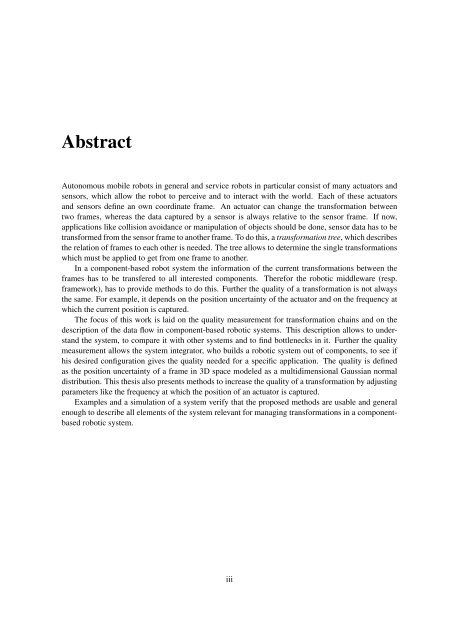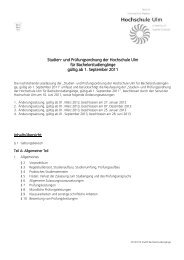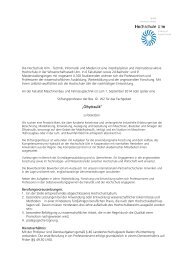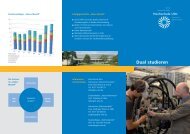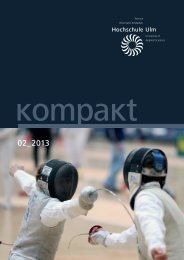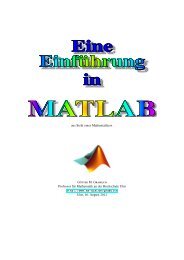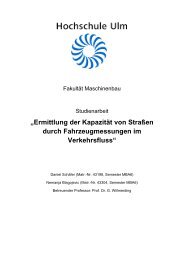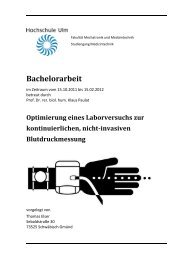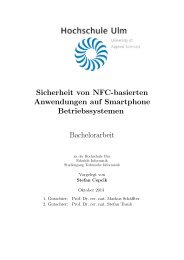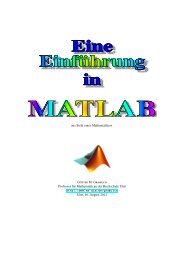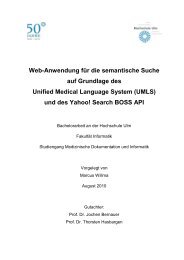PDF 1.938kB
PDF 1.938kB
PDF 1.938kB
Create successful ePaper yourself
Turn your PDF publications into a flip-book with our unique Google optimized e-Paper software.
Abstract<br />
Autonomous mobile robots in general and service robots in particular consist of many actuators and<br />
sensors, which allow the robot to perceive and to interact with the world. Each of these actuators<br />
and sensors define an own coordinate frame. An actuator can change the transformation between<br />
two frames, whereas the data captured by a sensor is always relative to the sensor frame. If now,<br />
applications like collision avoidance or manipulation of objects should be done, sensor data has to be<br />
transformed from the sensor frame to another frame. To do this, a transformation tree, which describes<br />
the relation of frames to each other is needed. The tree allows to determine the single transformations<br />
which must be applied to get from one frame to another.<br />
In a component-based robot system the information of the current transformations between the<br />
frames has to be transfered to all interested components. Therefor the robotic middleware (resp.<br />
framework), has to provide methods to do this. Further the quality of a transformation is not always<br />
the same. For example, it depends on the position uncertainty of the actuator and on the frequency at<br />
which the current position is captured.<br />
The focus of this work is laid on the quality measurement for transformation chains and on the<br />
description of the data flow in component-based robotic systems. This description allows to understand<br />
the system, to compare it with other systems and to find bottlenecks in it. Further the quality<br />
measurement allows the system integrator, who builds a robotic system out of components, to see if<br />
his desired configuration gives the quality needed for a specific application. The quality is defined<br />
as the position uncertainty of a frame in 3D space modeled as a multidimensional Gaussian normal<br />
distribution. This thesis also presents methods to increase the quality of a transformation by adjusting<br />
parameters like the frequency at which the position of an actuator is captured.<br />
Examples and a simulation of a system verify that the proposed methods are usable and general<br />
enough to describe all elements of the system relevant for managing transformations in a componentbased<br />
robotic system.<br />
iii


